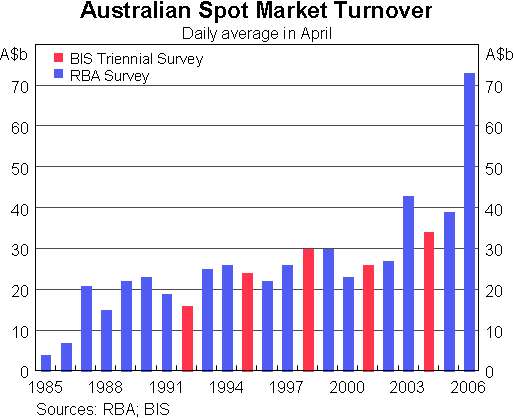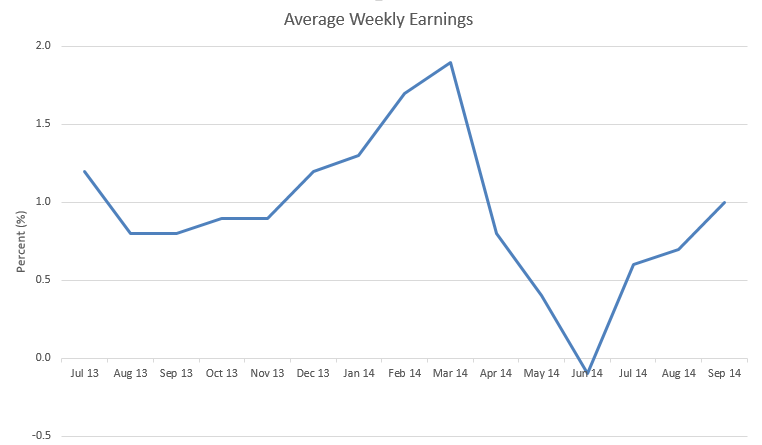The Growth of the Foreign Exchange Market
Post on: 5 Июль, 2015 No Comment

November 24, 2014 November 26, 2014
I n the past, the foreign exchange market was solely the domain of large institutions such as commercial and investment banks. They traded foreign exchange for their customers and among themselves. Currency traders employed by these institutions operated in loose and informal networks. Before the invention of fax machines and the Internet they initially conducted business via telex and dedicated telephone lines. These channels were augmented by electronic communication networks (ECNs) set up by information service providers such as Reuters and EBS (Electronic Broking Services). The advent of these ECNs fueled explosive growth in global foreign exchange trading. Figure 3.1 shows the growing impact of ECNs in foreign exchange trading from 1989 through to 2004.
Figure 3.1 — Market Share of ECNs in Foreign Exchange Transactions Percentage of transactions
Growth was further driven by the emergence of the Internet in the 1990s. It lowered the cost of handling and processing information, and brought foreign exchange trading services online. Now, the network of participants in foreign exchange markets has expanded to include multinational corporations, pension funds, asset managers, hedge funds, and individual investors. Nevertheless, trading between banks, via domestic and international interbank transactions, still accounts for the vast majority of the foreign exchange business.
CASE STUDY: REUTERS
The history of Reuters, the information agency, frequently reflects innovation and the use of leading edge technology. In 1851, German-born Reuters founder, Paul Julius Reuter, used the electric telegraph—a new invention, which he augmented with carrier pigeons—to launch the worlds first paid news service. The pigeons covered a gap in the telegraph line network between Aachen, where German telegraph lines ended, and Belgium. His core customers were business houses in England, France, and Belgium to whom he supplied news from the European markets, faster than any one could then conceive. On April 26, 1865, Reuters was the first agency to bring the news of President Abraham Lincolns assassination in the U.S. to the European public. On the back of scoops such as this, Reuters became a respected name for the dissemination of news. It also broke new ground with the use of radio to send news internationally, in 1923. In the early 1980s, Reuters pioneered the electronic marketplace in foreign exchange trading. Until then, trading was conducted over the telephone or by telex. Reuters innovation allowed foreign exchange trading to be conducted on screens in seconds. The company now offers both a conversational trading application and a matching service that enables traders to match bids and offers anonymously and automatically.
Electronic Broking Services (EBS) was formed in 1990 by some of the largest banks marking markets in foreign exchange in order to break the monopoly held by Reuters in the interbank spot foreign exchange market. EBS was the first organization to facilitate black box or algorithmic trading in spot FX through an application programming interface (API). In 2006 EBS was acquired by ICAP, the worlds largest interdealer broker. That acquisition combined EBSs strengths in electronic spot foreign exchange with ICAPs electronic broking business to create a single global multiproduct business with further growth potential and significant economies of scale. Currently each day the EBS Spot Dealing System handles USD 145 billion in spot foreign exchange transactions, 700,000 oz in gold and 7 million oz in silver. EBSs closest competitor is Reuters.
The worlds largest commercial and investment banks are the most active players in foreign exchange trade. These banks participate in the interbank market, which encompasses both the majority of commercial turnover in foreign exchange trade and large amounts of speculative trading every day. The interbank market initially kicked off in the 1980s when large commercial banks began viewing foreign exchange trading as a business activity in itself. Rather than just buying and selling currencies for their customers as a standard banking service, they started to trade on their own account with other commercial banks. As time passed, more commercial banks engaged in interbank trading, with larger investment banks also joining in. Today, banks such as Deutsche Bank, UBS, Citigroup, HSBC, Barclays, Merrill Lynch, JP Morgan Chase, Goldman Sachs, ABN AMRO, and Morgan Stanley trade hundreds of millions of dollars daily. The impact of interbank trading on broader financial markets is highly significant. For example, central banks actively intervene in interbank markets to guide their policy interest rates. Interbank markets also allow banks to trade among themselves—that is, banks with surplus funds can lend to other banks that need liquidity to, for instance, maintain their reserve requirements. Due to the large transaction sizes, the difference between buying and selling prices for currencies is at its most competitive in interbank trading. Participants in this market are regarded as the top tier of currency trading.
BID-ASK SPREADS

It is a characteristic of the foreign exchange market that differences between buying and selling prices (known in financial markets as bid-ask spreads) tend to get wider the smaller the transaction size. This is similar to retail and wholesale prices in other commodities. If individuals are exchanging small amounts of currency, then the difference between the bid and ask prices will be wider because the expenses involved in doing the smaller transaction will be higher than for larger transactions. Thus, an informal hierarchy is embedded into foreign exchange markets, with players in the interbank market on the top tier. The rest of the foreign exchange market has to accept the higher cost of doing business and look to the interbank market for directional cues on currencies. Indeed, dealers at big commercial banks regularly act as market makers, providing liquidity for currencies and, of course, profiting from the wider spreads they charge the retail trade.
It must be stressed that the foreign exchange market is primarily an over-the-counter market where foreign exchange contracts are agreed upon bilaterally between participants. Thus, the users of foreign exchange can enter into currency contracts directly with banks. The risk of holding a particular currency which may weaken is managed by banks in the interbank market, where the bank traders buy and sell currencies in line with their retail client orders—so, in effect, they transfer the risk among themselves. They are able to work easily together, rapidly buying and selling large amounts of currency by establishing credit relationships. Reflecting these needs, foreign exchange desks at the big banks are typically made up of two sets of traders—corporate traders, who make offers to buy and sell foreign currencies at specific prices to clients, and interbank traders, who then cover these positions by buying the currency from, or selling it to, other large commercial banks.
Technological advances in the last 20 years have transformed the foreign exchange market. Electronic systems enable traders to quickly communicate their foreign exchange needs to other players and match buyers of currencies
Figure 3.2 — Trading floor of a brokerage company
with sellers. This has led to greater transparency, which has helped to level the playing field among different types of market participants. Differences between buying and selling prices have narrowed and the market has become more efficient. Online trading platforms have appeared and are used by a broader range of participants, even opening up the foreign exchange market to individual investors.














